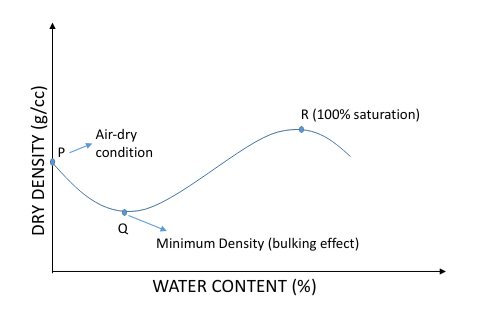COMPACTION OF SAND
The compaction characteristics of cohesionless soil (sand) are somewhat different from those of cohesive soils (clays).
A typical pattern of the relationship between dry density and water content for a cohesionless soil obtained from a laboratory test is shown in figure.
The water content has very little influence on the compacted density of soil.
At low water contents thin films of water formed around the sand grains tend to keep them apart (bulking of sand) and decrease the dry density upto a certain water content.
The point Q on the curve indicates the minimum dry density.
The maximum bulking (and hence the least density) occurs at a water content of about 4 to 5 %.
Further, as the water content increase the apparent cohesion gets reduced and is destroyed at 100 % saturation of the sand.
Thus the point R on the curve indicates the maximum dry density.
Thereafter, once again the dry density decreases with increase in the water content.
Increase of compactive effort has much less effect in the case of cohesionless soil than in the case of cohesive soils.
Vibration is considered to be the best method suitable for the compaction of the cohesionless soils, which are either fully dry or fully saturated.

